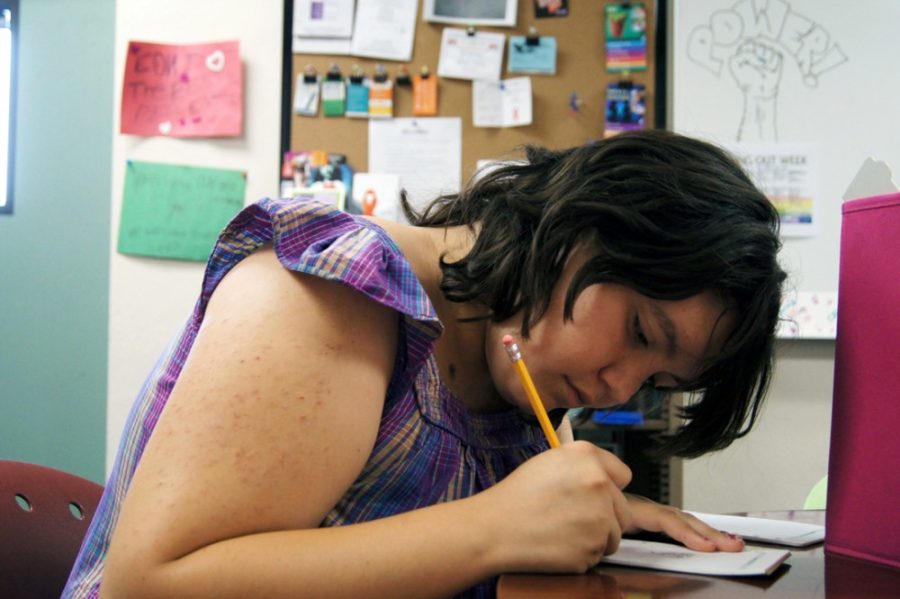It was somewhere between leaving her mother’s Arizona house and walking toward the bus stop that the frightening reality sank in: Amber Hough was now homeless.
Hough’s post-traumatic stress disorder and autism were causing “too much drama” for her mother and siblings. The arguments were getting louder, and the crying all the more common. Finally, Hough said, she was told to go.
“I felt much safer being homeless than having a roof over my head with my family,” said Hough, now 21. “My aunt took me in my senior year.”
Nationally, the rate of homelessness among students has increased 72 percent since the 2008 economic recession. A record number of roughly 1.1 million homeless youth are enrolled in public schools throughout the country, according to U.S. Department of Education data from the 2011-2012 school year. Arizona mirrors this trend. From 2006 to 2012, the number of homeless students in the state increased from 19,628 to 31,178, a 63 percent spike.
Dane Binder is the program director of Youth On Their Own, a dropout prevention program in Tucson that works with homeless students.
It’s difficult to convince a child who’s barely surviving that they must remain in school and do well, Binder said. So YOTO seeks to secure the basic needs of its students by providing them with food, clothing, a stipend, and refers them to organizations that can help them with issues such as housing.
Of the more than 1,000, 6th-12th grade students YOTO works with, Binder estimated between 60-75 percent of them graduate high school. He said the level of perseverance the kids display is remarkable, and recounted the example of one girl in particular. The student’s father was deported, and her mother and sister died in a car crash in which the student was also a passenger. Somehow, Binder said, she continued going to class, and eventually graduated high school.
Our Family Services, a nonprofit, runs a shelter for homeless children, in addition to placing homeless parents in an apartment complex that is exclusively for them.
Megan Sanes, assistant manager for the program’s youth services, said most people interact with homeless youth, at work or school, without any idea of just how harsh their circumstances are.
Hough, a former YOTO student, identifies as bisexual. She never told her family, and the pain of hiding that part of herself only exacerbated the tension she felt at home. It was after leaving her family that Hough found Eon, a Southern Arizona support group for LGBTQ and allied youth.
Eon’s homeless youth program provides roughly 80 teenagers and young adults with everything from bus passes to social service referrals. A sense of community was maybe the most valuable thing Eon’s given Hough, she said.
While 3-10 percent of the general population identifies as lesbian, gay, bisexual or transgender, these demographics disproportionately comprise between 20 and 40 percent of the national homeless youth population.
Though some parents are unable to take care of their children due to issues such as substance abuse or incarceration, there are mothers and fathers who choose to abandon their children. A parent’s conflict with their child’s sexual orientation is one of the leading reasons for this, said Michael Sulkowski, an assistant professor in the University of Arizona’s School Psychology Program.
Sulkowski said that as bad as the trend in student homelessness is, it can be reversed in Arizona and throughout the nation if it’s approached as a problem the entire community, not just government agencies and nonprofits, must resolve. He said that further, comprehensive research from academics is also needed to achieve this end.
_______________
Amer Taleb is a reporter for the Arizona Sonora News Service.









